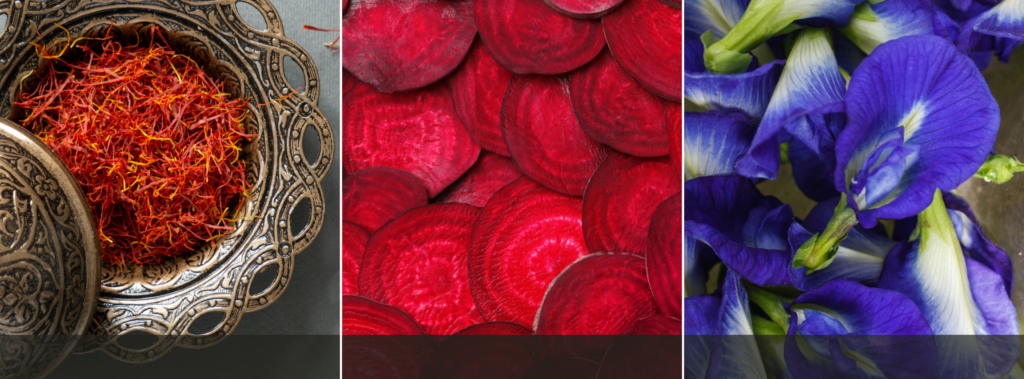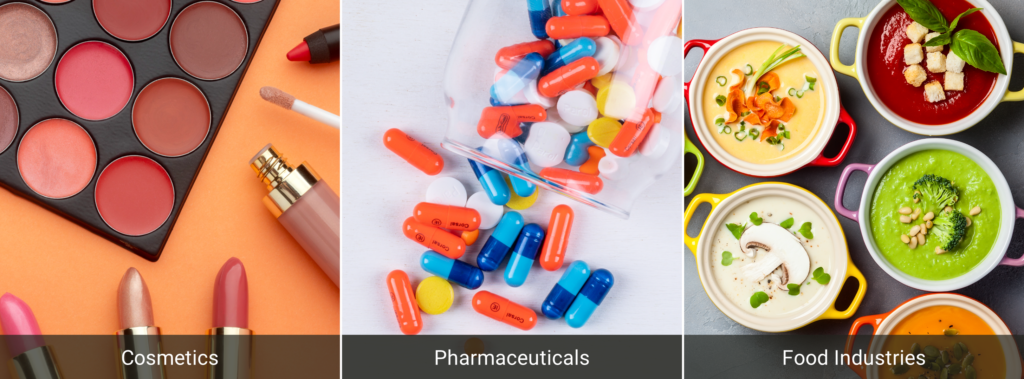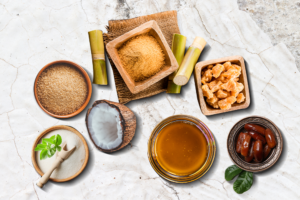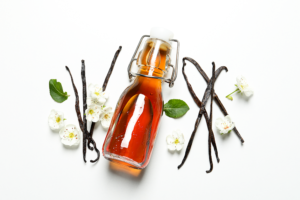Here’s food for thought, what would the world look like if food were colourless? That’s a hard thought to digest. Imagine tandoori chicken without royal red hues, macaroons without rainbow shades, and smoothies without rich colours. Unimaginable, isn’t it?
Food colours are an essential aspect of our culinary experience, adding a touch of vibrancy and appeal to the food we eat. Food colouring has been used for centuries to enhance the visual impression of a plated dish, making them more appetizing and appealing to the senses. Today, food colouring is an integral part of the food industry, with its application extending beyond just aesthetics to provide functionality. Therefore, understanding food colours is critical today, where food safety and consumer awareness have become increasingly important.
Why Do Food Colours Exist?
The need for food colour can be attributed to several reasons. One of the primary reasons is that food colour adds visual appeal, but it can also help to differentiate between products – such as between flavours. Additionally, food colouring can enhance certain foods’ natural colour, such as giving the butter a more vibrant yellow hue or making strawberries appear redder. Sometimes, such additives are used to restore colour that may be lost during processing, storage, or cooking.
It is important to note that while food colouring can enhance the appearance of food, it is not necessary for its nutritional value or safety. Also, there are potential health concerns surrounding the consumption of certain food colours, and their use is regulated.
Food Colour Then And Now
The use of food colouring dates back to ancient times when natural sources such as spices, fruits, and vegetables were used. For example, saffron was used to give food a yellow tint, while beetroot juice was used to add a reddish-purple colour. However, synthetic food colours were developed in the 19th century, which were cheaper and more stable than natural colours. This led to the widespread use of synthetic food colours in processed foods and beverages.
However, concerns over the safety of synthetic food colours have led to a shift towards natural and healthy colouring in recent years. In addition, synthetic food colours have been linked to hyperactivity in children. As a result, consumers have become increasingly concerned about synthetic food colours’ potential health effects and are seeking natural alternatives.
Natural food colouring sources include fruits, vegetables, spices, and herbs, which are processed to extract the pigments used as food colours. These natural colours are generally considered safer and healthier than synthetic colours, as they are derived from natural sources and do not contain harmful chemicals.
The shift towards natural and healthy colouring has driven consumer demand for healthier and more natural food products. In response, many food manufacturers have begun to use natural food colours in their products and have even developed new natural food colouring sources to meet this demand. The trend towards natural and healthy colouring will continue as consumers become increasingly health-conscious and seek more natural and wholesome food options.

Food Colours In The Industrial Age
With the dawn of the Industrial Age, many poisonous chemicals began to be used to colour sweets to make them more appealing to children. Friedrich Accum, in 1820 recorded sweets coloured with red vermillion (mercury sulphide), red lead, white lead, yellow lead chromate, verdigris (chemical mixture of copper salts of acetate, carbonate, chloride, formate, hydroxide, and sulphate) sulphate vitriol (copper sulphate, also known as bluestone), and Scheele’s (copper arsenite).
Sir William Henry Perkin, who was trying to create an anti-malaria drug, accidentally discovered mauveine, the first synthetic colour, in 1856. (quinine). Soon a new colour industry emerged that produced magenta, fuchsia, violet, and various blue and green hues. These colours were used in many industries, especially textiles. Synthetic dyes were perfect for the food industry’s growth. Food colouring with Perkins’ new artificial dyes was cheaper and more stable. The colours were popular and soon appeared in many foods.
The new food industry’s excessive use of colours caused many issues. Artificial colours were used to hide low-quality food and deceive consumers. Foods contained poisonous colours, which was worrying. Cheese, pickles, and sweets were coloured with red lead, copper sulphate, and mineral salts. “Tea” was sometimes copper-tinted thorn leaves.
However, concerns over the safety of synthetic food colours began to emerge in the late 20th century. Studies suggested that some synthetic food colours may cause hyperactivity in children and may be linked to other health problems, such as cancer. In response, regulatory agencies such as the US Food and Drug Administration (FDA) began to restrict some synthetic food colours and required safety testing before new colours could be approved for use in food.
Today, synthetic food colours are still standard in many processed foods. However, natural food colours are becoming increasingly popular as consumers seek more natural and healthy food options.
The Rise Of Artificial Colours
William Henry Perkin named the first synthetic organic dye “mauve” in 1856. Similar dyes were subsequently discovered and adopted for use in cosmetics, pharmaceuticals, and food industries. Coal-tar colours got their name because they were originally made from waste products of the coal industry.
By 1900, artificial colours were used in various consumer goods across the United States, including food, medicine, and cosmetics. Several colouring compounds were employed to mask the quality of subpar or damaged foods. However, careful analysis of the chemicals used to colour foods at the time revealed the addition of numerous toxic compounds like lead, arsenic, and mercury. In addition, toxins, irritants, sensitizers, and carcinogens were often known to be included in the raw ingredients used to synthesize colouring compounds.

Food Colours And Their Revelations
In 2007 the Southampton Six Study shook the F&B world with startling results. The study conducted in the United Kingdom investigated the potential link between certain synthetic food colours and hyperactivity in children. The study was commissioned by the UK Food Standards Agency (FSA) and was carried out by researchers at the University of Southampton.
The study focused on six synthetic food colours: Tartrazine (E102), Quinoline Yellow (E104), Sunset Yellow (E110), Carmoisine (E122), Ponceau 4R (E124), and Allura Red (E129). The researchers recruited 153 3-year-old and 144 8- and 9-year-old children from the general population and tested the effects of these food colours on their behaviour. The children were given drinks containing the food colours, and their behaviour was assessed using a standardized questionnaire completed by their parents and teachers.
The study’s results suggested that consumption of the synthetic food colours used was associated with increased hyperactive behaviour in children. The study concluded that there was a clear link between the consumption of these food colours and increased hyperactivity in children. It recommended that these colours be restricted or banned in food products.
The study significantly impacted food safety regulations, leading to new regulations in the European Union that require warning labels on foods containing these synthetic food colours. The study also increased consumer awareness of the potential health risks associated with synthetic food colours and led to a shift towards natural food colouring alternatives in some food products.
Birth Of E-numbered Colours
The use of E-numbered food colours began in Europe in the 1960s. The European Union (EU) established a system of food additive regulation that required all food additives, including colours, to be approved for use and listed in a standardized format with an “E” prefix followed by a number. This system was designed to ensure that food additives, including colours, were safe for consumption and properly labelled.
The EU’s system of food additive regulation was based on scientific evaluation of safety and efficacy. The European Food Safety Authority (EFSA) is responsible for evaluating the safety of food additives in the EU, including food colours. The EFSA assesses the safety of food colours based on their toxicity, metabolism, and potential impact on human health.
Colouring Food – A New Type Of Natural
In recent years, there has been a growing trend towards natural food colours, driven by consumer demand for healthier and more natural food options. Developing new technologies for extracting and processing natural food colours has also contributed to their popularity. In addition, it has made it possible to produce natural food colours that are more stable and consistent in colour than in the past, making them more attractive to food manufacturers.
Natural food colours are used in various food products, including beverages, confectionery, baked goods, and dairy products. They can also enhance the appearance of products such as meats and seafood. The advantages of natural food colour include being derived from plant-based sources, making them a safer and healthier alternative to synthetic dyes. In addition, natural food colours are often used to create a specific visual appeal, such as the deep green colour of spinach in a smoothie, and so on.
The popularity of natural food colours can be attributed to the growing demand for healthier and more natural food options, and advances in technology that have made them more accessible and consistent. India is embracing natural food colour as consumers and food manufacturers increasingly prioritize clean-label ingredients and sustainable choices.
From health benefits, marketing advantages, regulatory requirements, and sustainability to meeting consumer demands, the reasons to shift to natural colours are endless for today’s smart F&B businesses. If you wish to be a market leader, then now is the time to make the natural shift and transition to using only natural colours. Trust Symega to guide you in this journey and help your product vanish from the shelves. We hold years of experience and take pride in our skilled and seasoned experts who are here to customize and formulate solutions to suit your every business need.
To learn more, click here.




